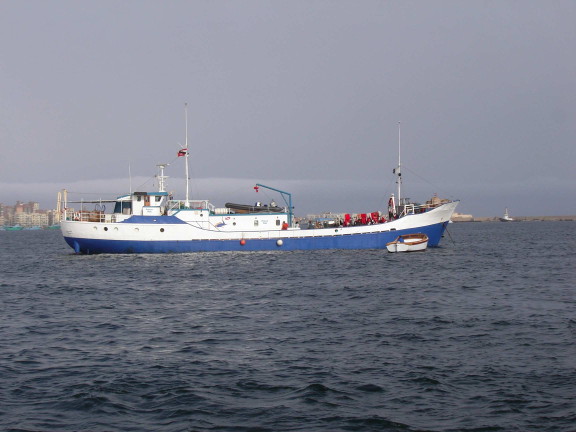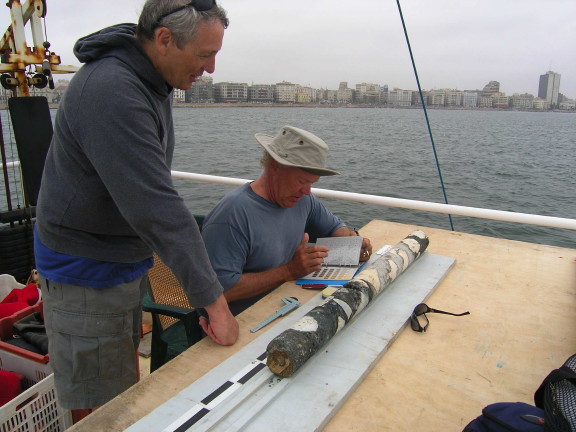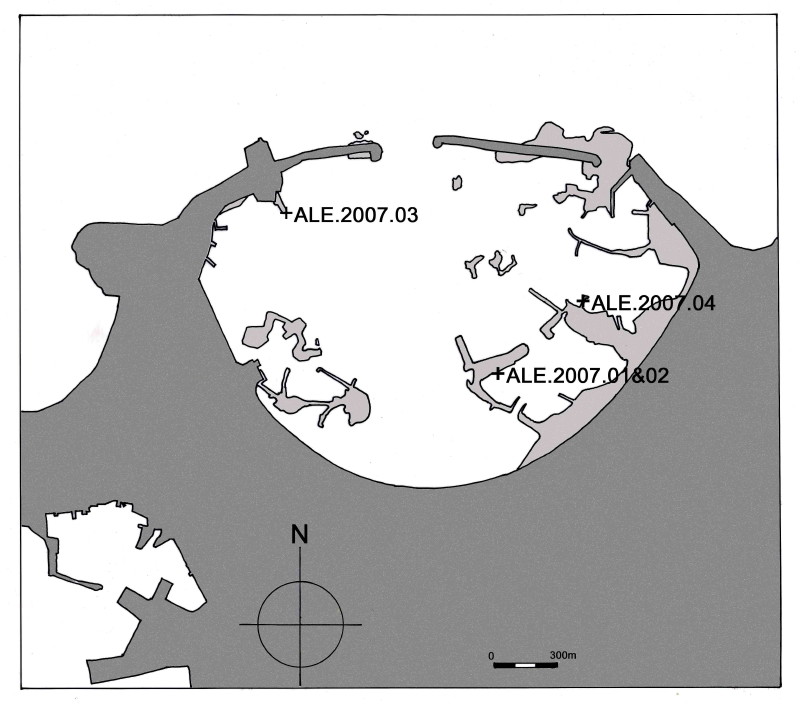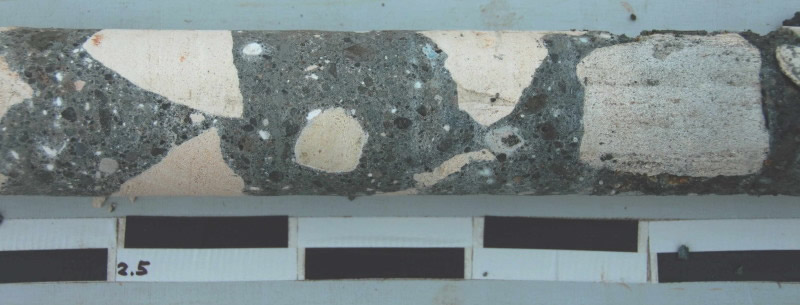Preliminary Report on Coring in the
Harbour of Alexandria, 2007
J. P. Oleson, C. Brandon, R. L. Hohlfelder
From 5-13 May 2007 Chris Brandon, John Oleson, and Derek
Klapecki worked with the team of divers directed by F. Goddio in the inner
harbour of Alexandria. The ROMACONS group worked under Goddio’s permit from the
Egyptian Antiquities Department, and he and his team very graciously assisted
our team with the clearance of our equipment and procedures, as well as
providing housing, boats, diving equipment, and space on his boat, the Princess Douda, for our work.
(Figure 1: The Princess Douda)

We were also assisted by John Cole, at that time
Director of the Oxford Institute of Underwater Archaeology. Goddio’s project is
funded by the Hilti Foundation, and the ROMACONS work by the Social Sciences
and Humanities Research Council of Canada.

The ROMACONS team recovered four cores from submerged harbour structures in the great eastern harbour basin of Alexandria (Figure 3: plan of harbour and core locations)

Two cores (ALE.2007.01 and 02) were recovered from a thin bed of concrete within a single-use barge form at the base of the Antirhodos Island (Brandon 1996). A third core (ALE.2007.03) was taken from the largest of sereral large concrete pilae extending south from the modern western breakwater. (Figure 4: Core ALE.2007.03, detail)

The fourth core (ALE.2007.04) was taken on a jetty extending nor-northeast from a peninsula at the south end of the Royal Harbour.
Although the analysis is not yet complete, these cores closely resemble those taken at Caesarea in 2005 (Hohlfelder et al. 2007). The mortar is a distinctive bluish-green colour with a rich pozzolanic additive; the aggregate consists mostly of the local kurkar aeolianite sandstone. Given the design of the formwork and the visual appearance of the mortar, it seems likely that all these samples are Roman in date.
References
Brandon, C. 1996, “Cements, Concrete, and Settling Barges at Sebastos: Comparisons with Other Roman Harbour Examples and the Descriptions of Vitruvius,” in A. Raban, K. G. Holum, edd., Caesarea Maritima: A Retrospective after Two Millennia, Leiden, pp. 25-40.
Hohlfelder, R. L.,
Brandon, C., and J. P. Oleson, 2007, “Building a Roman Pila in the Sea:
Experimental Archaeology at Brindisi, Italy, September 2004,” International
Journal of Nautical Archaeology 36: 409-15.